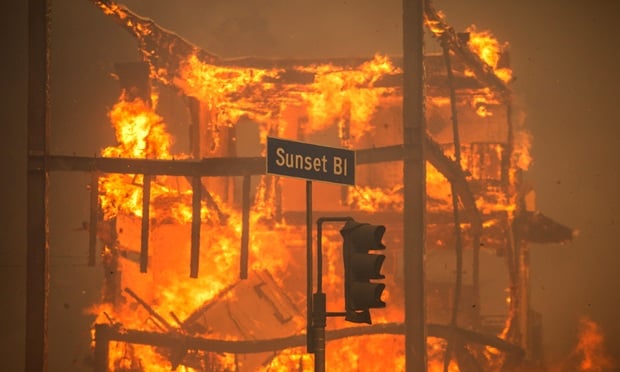Insurers Returning To Nursing Home Market
Traditional carriers must battle to win back business from captive alternatives
Flattening prices is now the norm in the sometimes treacherous world of covering long term care facilitiesspurred, in part, by an industry that has gotten its loss prevention act together and often turned to self-insurance in a hard market.
Dick Greenwood, president of the Colorado Springs-based Health Care Insurers Inc.a wholesaler subsidiary of Arthur J. Gallaghersaid that soaring premiums partly spurred by rich jury verdicts sent much of the nursing home market to alternative risk-transfer approaches several years ago.
Within the insurance market, premiums rose more than tenfold over the past decade, producing what Mr. Greenwood termed rate adequacy.
The soaring insurance costs produced another byproduct, however. We forced these nursing home clients to captives, and they found out it is not all that bad to self-insure or partially self-insure, he said.
Those long term care facilities that have gone over to alternative risk management techniques remain largely satisfied with their new arrangements, and have not been returning to the traditional market, he noted.
The market is softening. Capacity is there, but we are not seeing a flood of insureds coming back, he observed.
The significant exodus from the traditional market has prompted insurance companies to take steps to once again become important players.
It has forced them to increase capacity. We are seeing a trend in that direction, according to Mr. Greenwood. Two or three years ago, the only viable market out there was AIGand you paid a pound of flesh to have your account insured, he added.
A report published last year by Aon bears out Mr. Greenwoods contention.
According to the Chicago-based brokerage firms report, the average long term care general liability/professional liability cost per annual occupied skilled nursing bed jumped from $310 in 1992 to $2,290 in 2003, and premiums followed a similar climb.
The 51 percent average annual premium increase in 2003 seemed paltry when compared to the 143 percent and 131 percent average hikes in 2002 and 2001, respectively, the report stated.
Today, non-admitted companies dominate the market, but that has its costs.
Surplus lines would get an inordinate amount of premium, but the terms and conditions were watered down, so the coverage quality was not there, Mr. Greenwood said.
Saye Gbalazeh, lead underwriter for Lighthouse Companiesan insurance program and underwriting development company based in Annandale, Va.agreed that the non-admitted market dominates the nursing home field.
He also said that many companies are opting out of the sexual and physical abuse liability component of professional liability coverage. Mr. Gbalazeh said that as a professional, he will often warn clients of the risks of going without such coverage, but in the end it is their prerogative.
Some admitted companies have learned to navigate the market. For example, Des Moines-based GuideOne Co., which specializes in the not-for-profit market, is thriving, according to Mr. Greenwood. And you see Cincinnati Insurance Companies, which was making overtures along the lines of wanting to cancel their entire book, now staying on with some of their more preferred accounts, he added.
Jeff Barnes, Cincinnati Insurance product manager, said that as one of the few carriers writing coverage in the admitted market, the company never really considered exiting the line. That really isnt our style, he said.
Instead, the company undertook a major re-underwriting effort three years ago that resulted in a sizable increase in professional liability premiums. While the number of accounts decreased, gross written premium rose considerably for the line, he noted.
In addition to requiring more favorable nurse-patient staffing ratios, he said insureds were required to install sprinkler systems and high-rise operations were not renewed.
In addition, subsidiaries of CNA and AIG also write nursing home risk in the non-admitted market. This despite the fact that late last year a study put out by CNA HealthPro, analyzing claims brought against the company, indicated a 415 percent increase in the ultimate average severity of claimsfrom $25,919 in 1996 to $107,609 in 2003.
The most frequent causeresident fallsaccounted for 34 percent of all open and closed claims, while fractures, at 30 percent, were the most frequent injury. Skilled nursing facilities had the greatest frequency of claims, while assisted living facilities had the highest average severity.
The 1997, $92.4 million jury verdict against a nursing home in Texas for neglectful treatment sent a message to the industry that something had to change, industry observers said.
Several years ago, the typical medical malpractice target was the acute-care hospital, and when that started to stabilize, the next hot pocket was long term care, according to Mr. Greenwood. And the issue they attacked was quality of care.
As a result, many carriers excluded coverages for sexual and physical abuse claims from their professional liability coverage. The CNA study said that the highest severity allegationabuse, which includes physical, sexual, emotional or financial mistreatmenthad an average paid total of $159,715.
In addition, other carriers, while providing such coverage, added stringent sublimits, and in some cases provided defense-only coverage to help protect themselves.
With the nursing home industry correcting itself by tightening policies and procedures, Mr. Greenwood said that the average nursing home client that is solvent and viable is better off today than before. He noted that in addition to tightening policy and procedures guidelines, facilities added more extensive background checks of new hires.
Registered nurse staffing-to-patient ratios went up as well, he noted. Today, we are seeing carriers that will not take on the risk unless staffing ratios meet certain targets.
Underwriters also started looking more seriously at loss histories before taking on any risk. They are doing more of an analytical review of the claim and the circumstance, and they are also putting a lot more credence on deficiency reports from state surveyors, he said.
Workers compensation is another tough line to get coverage for in this area, with most coming from state-assigned risk pools. With many jobs having duties that can lead to lower back pains, along with the transient nature of much of the workforce, workers comp rates can be quite high, Mr. Greenwood said.
GuideOne Executive Vice President Jan Beckstrom said her company started out with a specialty in underwriting churches and got into the nursing home business when those clients asked them to take on the risks.
While the company did venture into the for-profit field in the past, it stays primarily today to its not-for-profit core competency. Mike McQuillen, manager of major accounts, said when facilities are not so concerned about quarterly results, they are more willing to make the loss prevention investments that will make for a profitable account.
The CNA study bears this out, asserting the average severity of claims involving for-profit long term care facilities was more than double that of claims involving not-for-profit facilities.
Ms. Beckstrom said that this past year GuideOne came out with a video titled Setting Realistic Expectations.
What it does is describe what life is like in the [nursing] home in a realistic setting, she said. Loved ones often have the idea that Grandma is watched 24 hours a day, and that is not true. She added that it is hoped the video will cut down on claims and ultimately lawsuits.
GuideOne currently writes in 43 states, avoiding the litigation-prone Texas and Florida.
As for pricing, Mr. McQuillen also sees a certain leveling, although he shies away from the term softening.
Carol Fleishman, who heads up the managed insurance program for San Diego-based Arrowhead, a managing general agency, said all of her nursing home accounts are carried by Lloyds syndicates, primarily because of their expertise.
Nursing homes are obviously such a specialized class, she said, underscoring the need for expertise.
General and professional liability coverages are written as a two-part single policy. Normally it would be $100,000 per occurrence or a $300,000 aggregate, she said, with sexual and physical abuse written as supplements.
Ms. Fleishman said the market softened somewhat last year, but is now flattening, and she hopes there is not a return to earlier part of the decade.
You can only hope there are responsible underwriters and carriers out there so we dont see the plunge of rates that we saw at one time and get to the point where we are individually underwriting these nursing homes that are exceptional within their class, she said.
Reproduced from National Underwriter Property & Casualty/Risk & Benefits Management Edition, February 11, 2005. Copyright 2005 by The National Underwriter Company in the serial publication. All rights reserved.Copyright in this article as an independent work may be held by the author.
Want to continue reading?
Become a Free PropertyCasualty360 Digital Reader
Your access to unlimited PropertyCasualty360 content isn’t changing.
Once you are an ALM digital member, you’ll receive:
- Breaking insurance news and analysis, on-site and via our newsletters and custom alerts
- Weekly Insurance Speak podcast featuring exclusive interviews with industry leaders
- Educational webcasts, white papers, and ebooks from industry thought leaders
- Critical converage of the employee benefits and financial advisory markets on our other ALM sites, BenefitsPRO and ThinkAdvisor
Already have an account? Sign In Now
© 2025 ALM Global, LLC, All Rights Reserved. Request academic re-use from www.copyright.com. All other uses, submit a request to [email protected]. For more information visit Asset & Logo Licensing.








